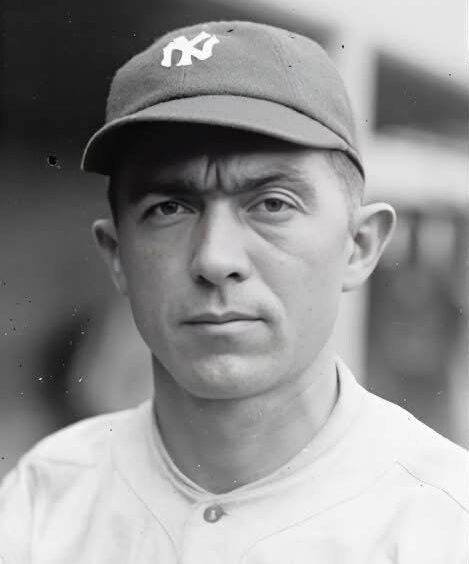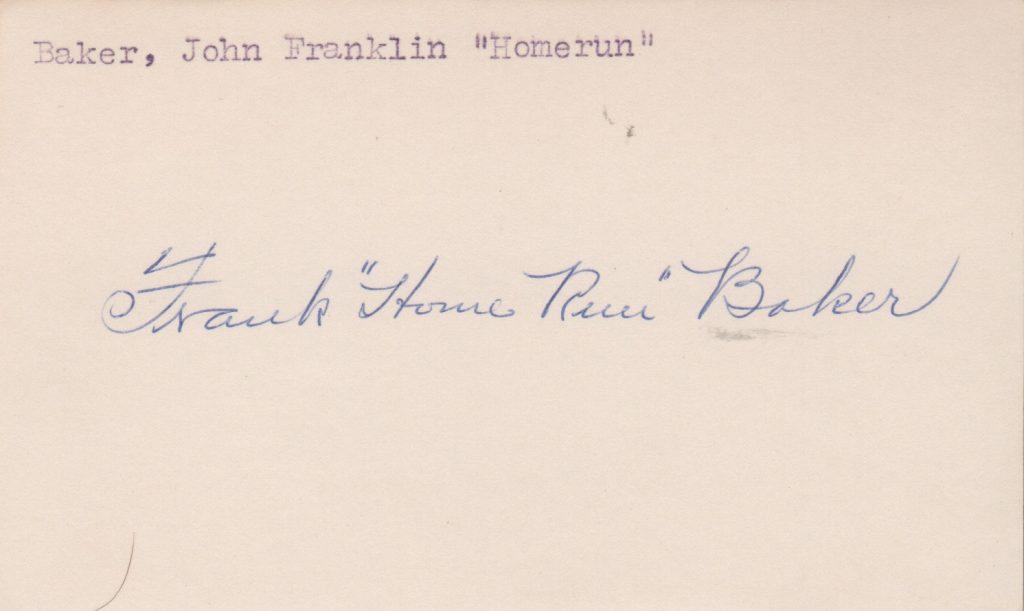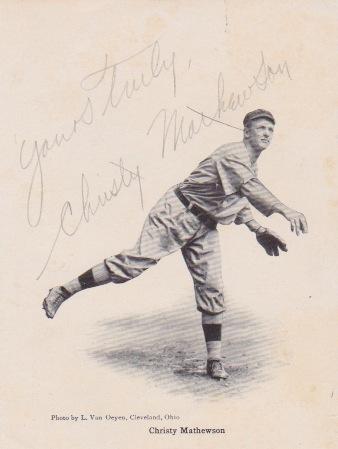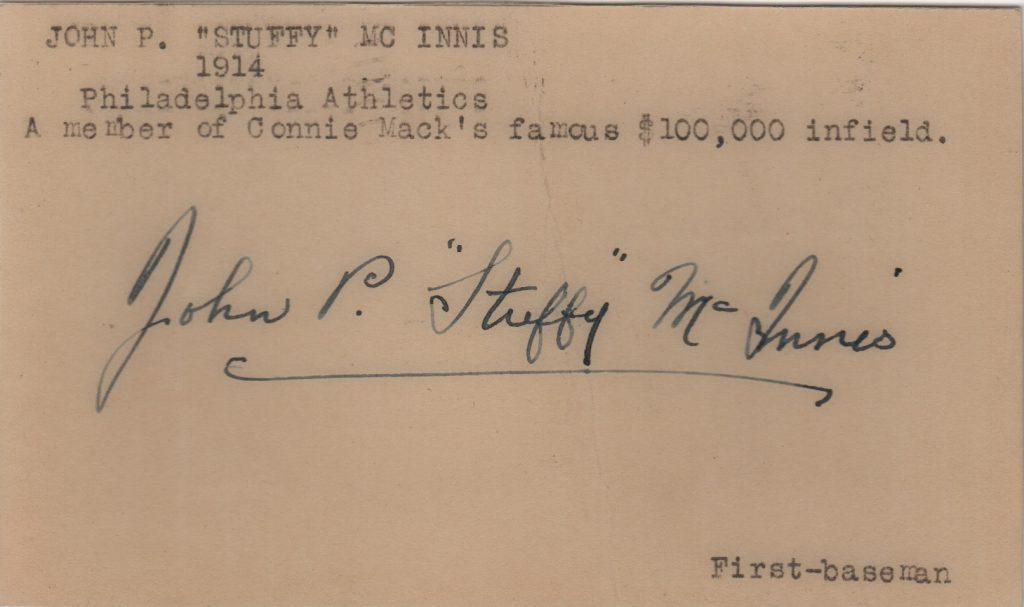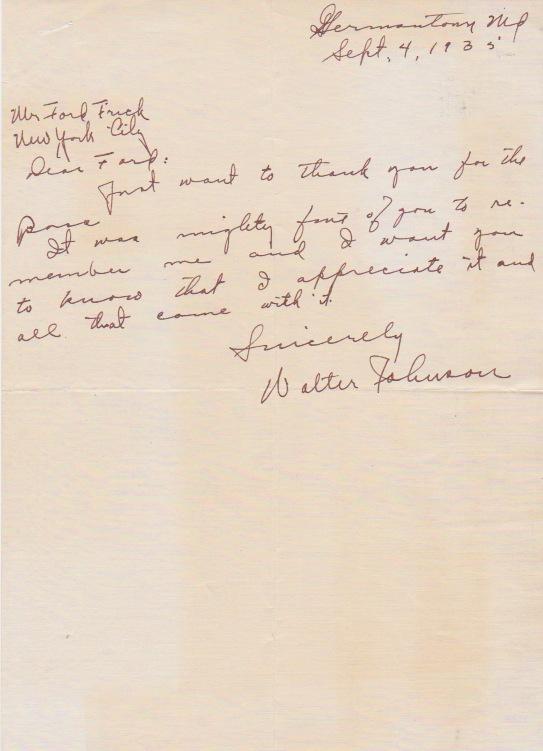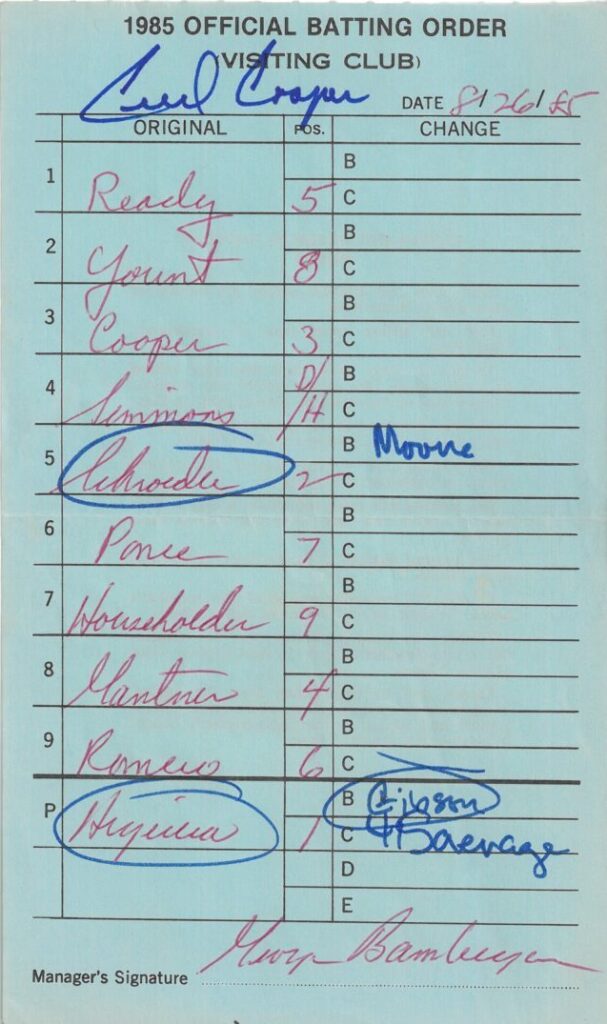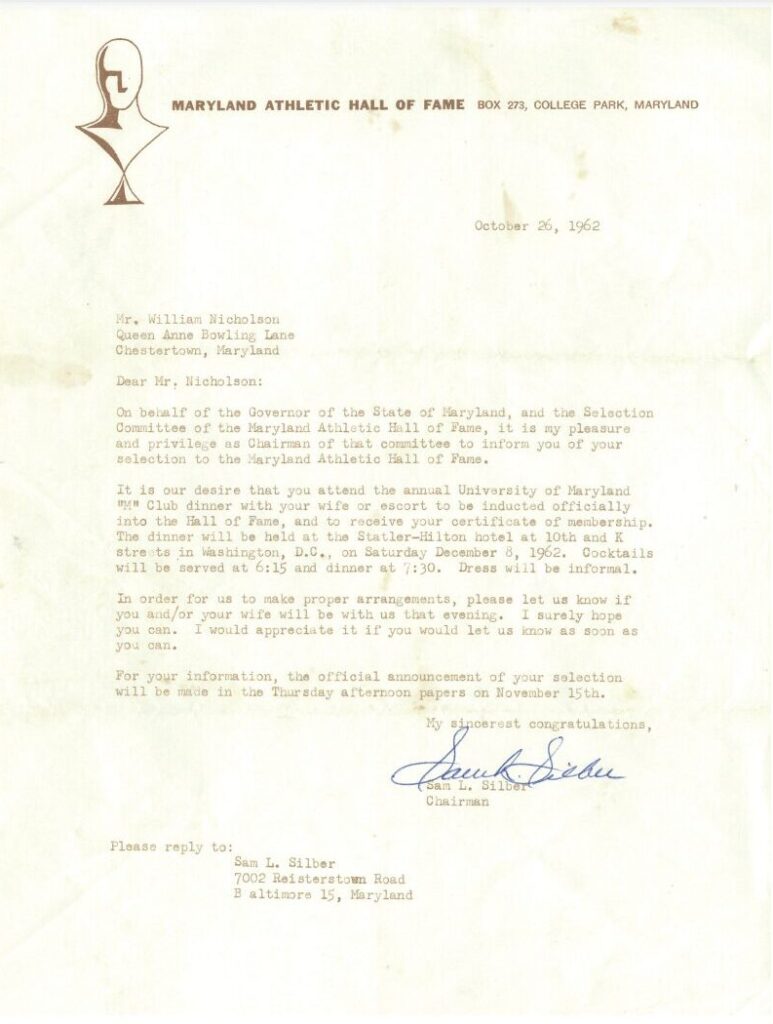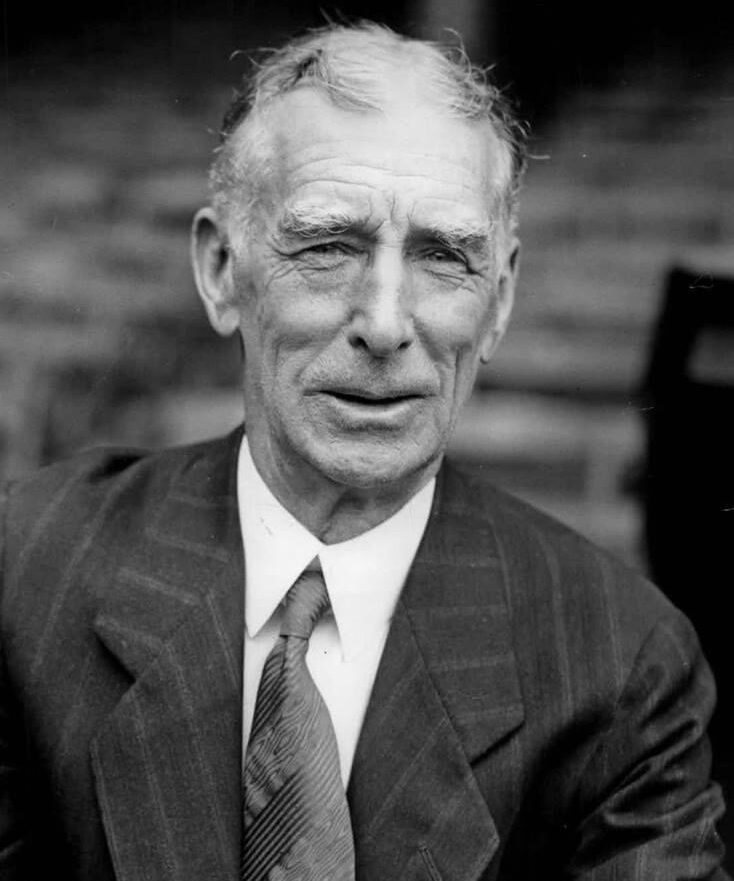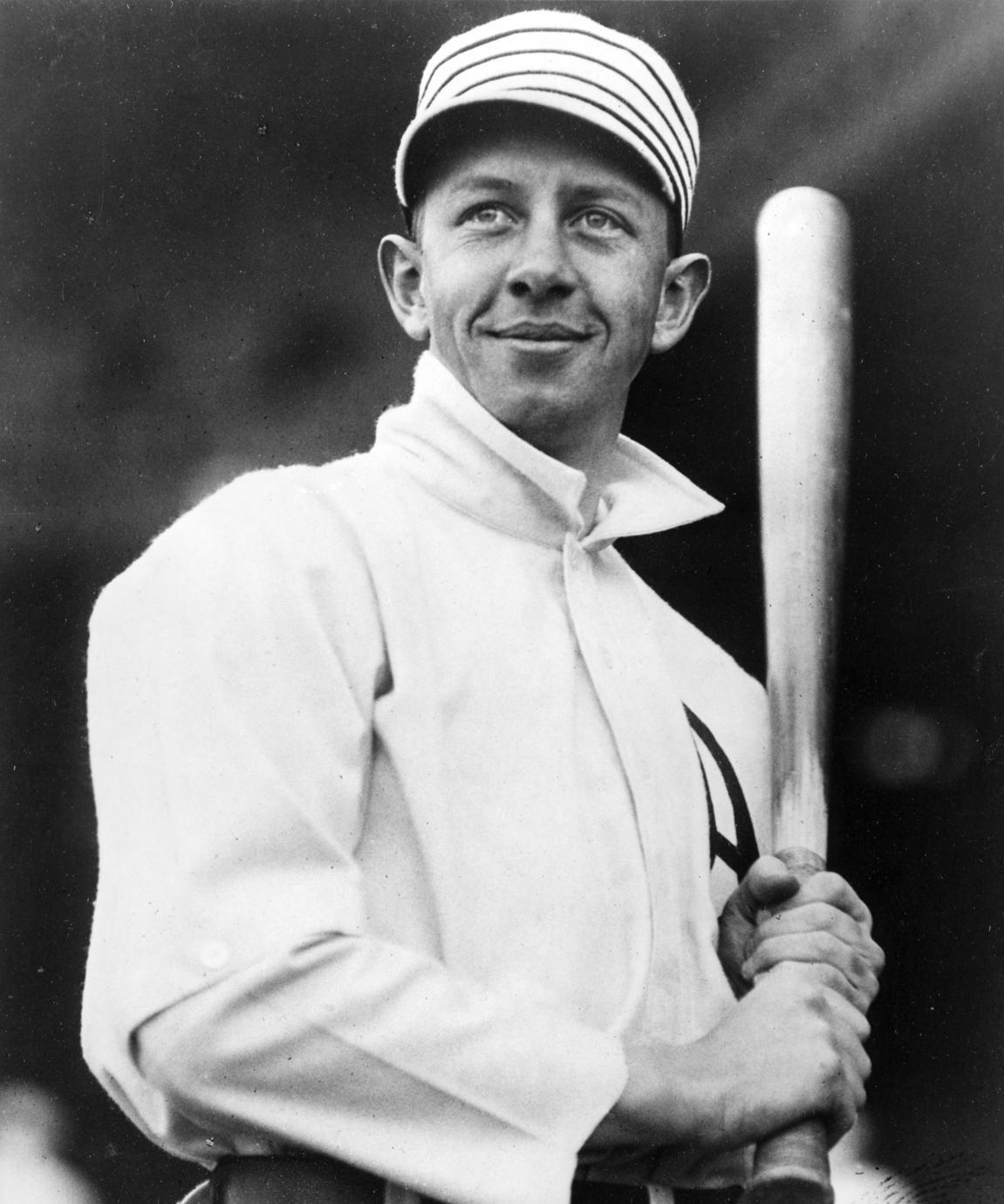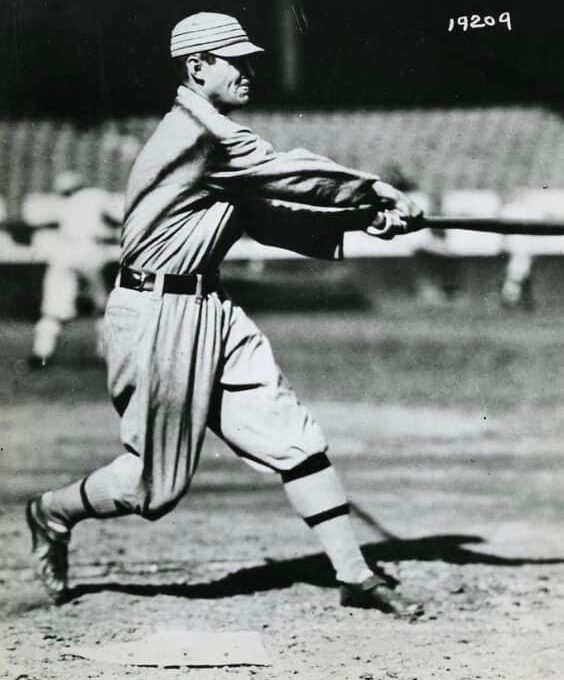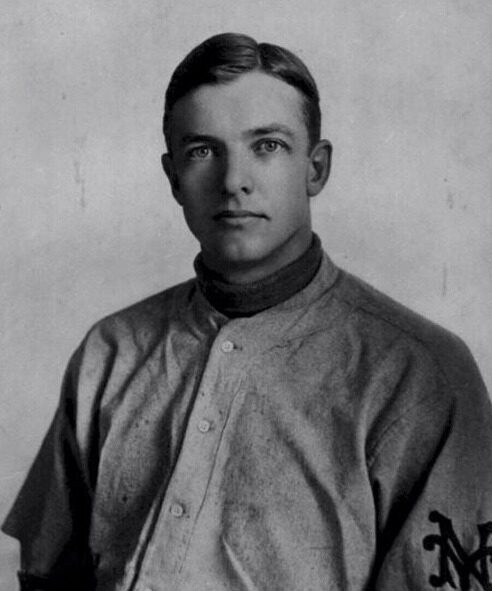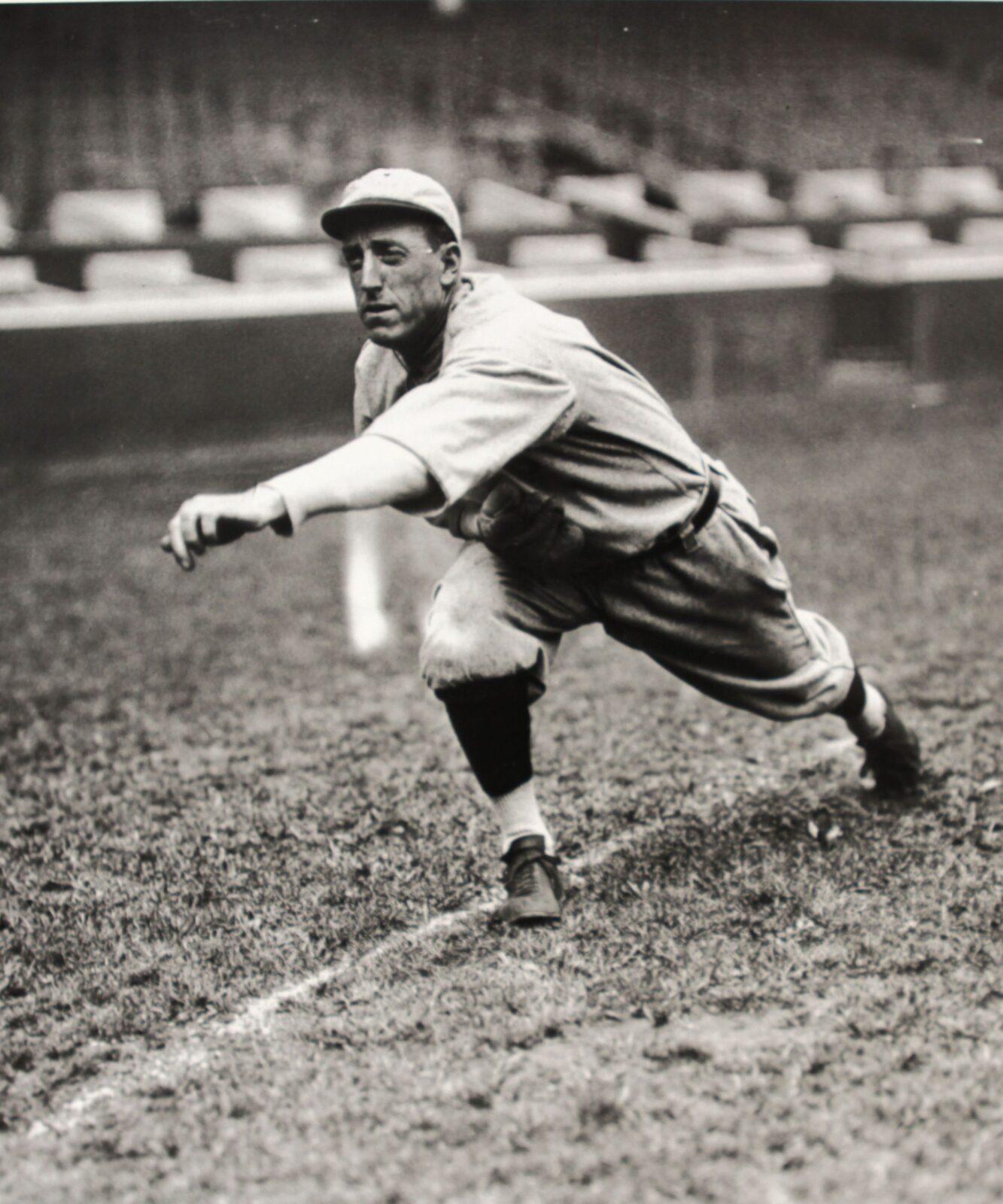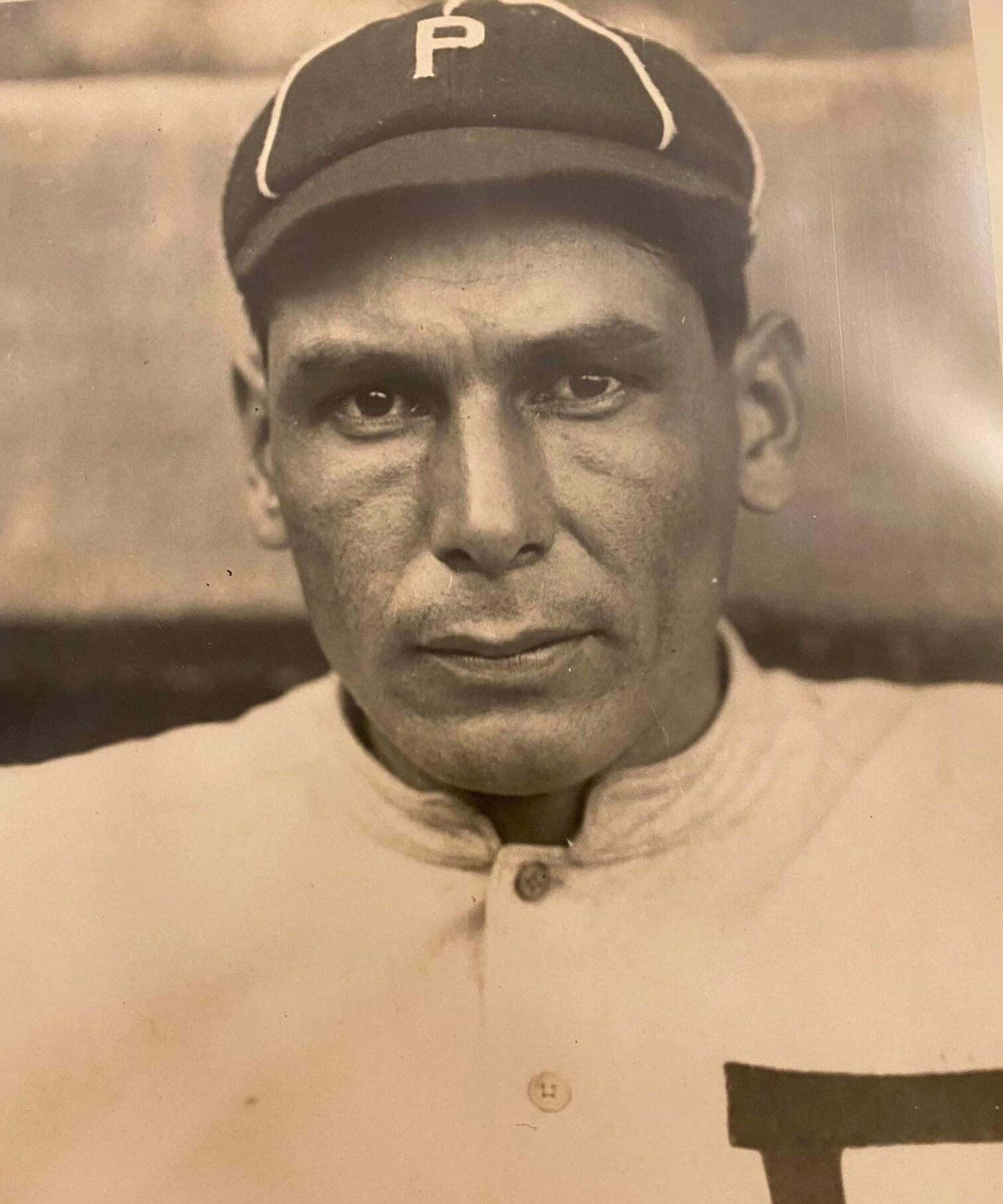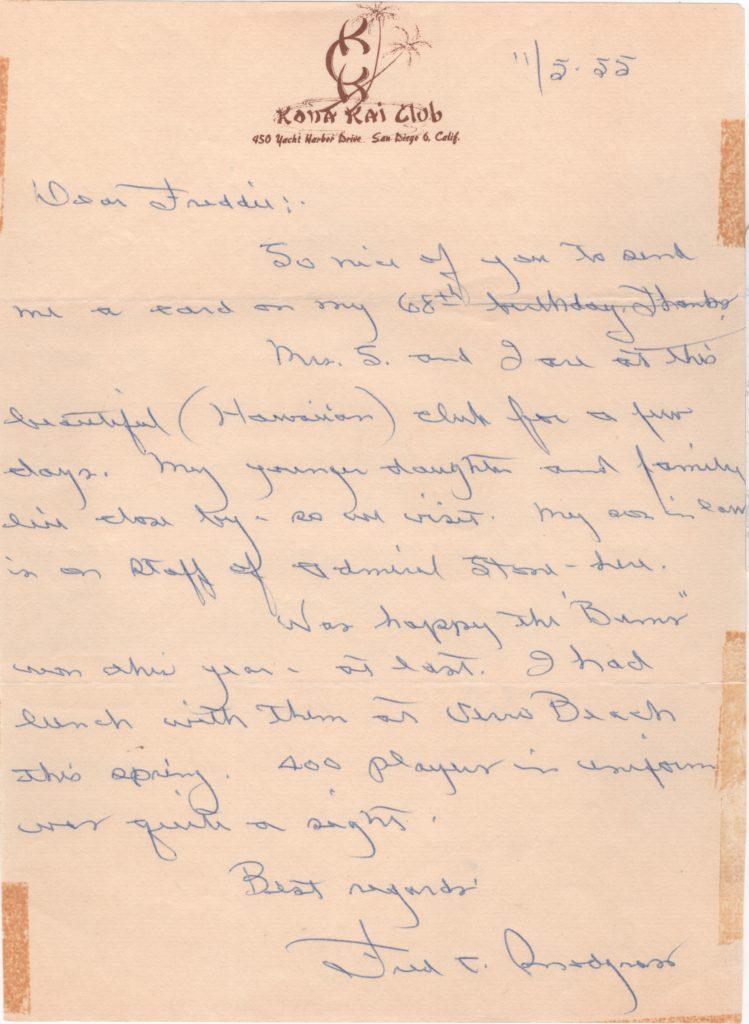
After getting viciously spiked in Game One of the 1911 Fall Classic, Frank Baker took revenge with his bat. The excitement started in the sixth inning of Game One. Giants center fielder Fred Snodgrass stood at second base in a 1-to-1 tie. When Chief Bender delivered a pitch in the dirt, Snodgrass broke for third. Baker received the throw from catcher Ira Thomas and blocked the bag.
His spikes sharpened, Snodgrass slid hard, severely gashing the third baseman’s arm. Baker dropped the ball and Snodgrass was safe. Athletics medical personnel rushed to the bleeding Baker. The trainer patched up the wound. Bloodied but unbroken, Baker insisted on remaining in the game. The Giants pushed across a run in the following inning and won the game 2-1.
In Game Two Baker began his revenge. In the sixth inning of a 1-1 tie, Baker came to bat. With one on and two out, Baker smashed a Rube Marquard fastball over the right field fence to push the Athletics in front. Philadelphia’s Eddie Plank shut down the Giants the rest of the way to earn the complete-game victory.
Baker’s heroics were not finished.
In Game Three Cooperstown man Christy Mathewson stifled A’s hitters through eight innings to lead 1-0. After retiring Eddie Collins to start the 9th, Mathewson faced Baker. Down to their final two outs, the Athletics were desperate. Baker changed the complexion of the game with his second home run of the series.
At the height of the Deadball Era, homers were in short supply. Baker, who hit .334 with 115 RBI in the regular season led the AL with 11 long balls. Slugging two in the Fall Classic was no small feat.
Snodgrass led off the 10th with a walk and was sacrificed to second. On the next pitch catcher Chief Meyers let a Jack Coombs breaking ball scoot by him. Representing the game-winning walk-off run, Snodgrass took off for third. Myers fired to Baker as Snodgrass again came into the bag and again spiked the A’s star. Despite getting cut up for the second time in three days, the determined Baker received the throw, applied the tag, and recorded the out.
In the 11th Baker was again in the middle of an Athletics rally. His one-out single advanced go-ahead run Collins to third. When shortstop Art Fletcher booted Danny Murphy’s grounder, Collins scored and Baker advanced to third. Harry Davis then singled home Baker for a much-needed insurance run.
In the bottom of the frame New York’s Buck Herzog led off with a double and eventually scored when Collins misplayed a ground ball off of Beals Becker’s bat. With two out, potential tying run Becker tried to steal second base but was gunned down by Chief Myers to end the game. Baker’s insurance run proved to be the difference.
In the postgame clubhouse, writers swarmed Philadelphia hero Baker. Blood oozing from the bandages on his arm, Baker patiently answered the reporters’ questions. Repeatedly they asked about Snodgrass’ motivations. At first Baker brushed aside the queries. When the Baltimore Sun’s C. Mathews pressed Baker about Snodgrass, Baker could take no more. “Yes, Snodgrass spiked me intentionally. He acted like a swell-headed busher. You can use those very words, too.”
The Athletics eventually closed out the Series with a 13-2 drubbing of the Giants in Game Six. Baker finished the tilt by leading both teams in hits, home runs, and RBI. His Fall Classic slash line of .375/.400/.708 ensured the 25-year old’s place as a World Series star. Baker’s courage and fortitude in the face of Snodgrass’ spike jobs made him a legend.
In the collection is this letter penned and signed by Fred Snodgrass. Dated November 5, 1955, the letter references the Dodgers’ Fall Classic victory – their only championship representing Brooklyn.
Snodgrass writes in part, “Was happy the ‘Bums’ won this year at last. I had lunch this spring with them at Vero Beach. 400 players in uniform was quite a sight.”
